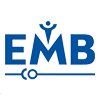


On October 28, Dr Maysam Ghovanloo, assistant professor in the School of Electrical and Computer Engineering at Georgia Tech, spoke on "Novel technologies to improve the quality of life for individuals with disabilities."
Maysam Ghovanloo is director of the Georgia Tech Bionics Laboratory (GT-Bionics), which has a goal of enhancing the state-of-the-art by developing new implantable microelectronic devices and novel assistive technologies. Details about Dr. Ghovanloo's research projects can be found at: https://www.ece.gatech.edu/research/labs/gt-bionics/index_files/My_Research.htm.
The IEEE EMB Society is grateful to Dr. Ghovanloo for giving this presentation.
On August 27, 2008, Dr Srini Tridandapani presented "Freezing the Heart: A Proposal for Research in Cardiac Computed Tomographic Angiography".
Cardiac computed tomography (CT), particularly CT coronary angiography, is at the cusp of revolutionizing cardiac diagnosis. The chief challenge is that CT slices need to be acquired during the portion of the cardiac cycle where the heart is quasi-stationary or quiescent. This has thus far been limited because the current solution -electrocardiography (ECG)-based gating, does not accurately and reliably predict the instantaneous position of the heart. Dr Tridandapani believes that echocardiography or ultrasound (US), a real-time modality just like ECG, can provide a better trigger since it actually images the exact position of the heart. He proposed to 1) prove that US is superior for this purpose, and 2) develop a real-time US-based trigger for purposes of CT slice acquisition. The ultimate expected outcome of this development would be a reduction in the number of normal, diagnostic, invasive coronary angiograms.
Dr. Tridandapani is in the embryonic stages of building a laboratory to develop advanced cardiac imaging techniques. The IEEE EMB Society is grateful to Dr. Tridandapani for giving this presentation.
On April 1, 2008, Dr. Julian Alexander Bragg presented "From Engineering to Medicine: Threshold Tracking". While the majority of medical school applicants still enter with a degree in life sciences, a small but significant number of them have an engineering background. An engineering education, with its training in systems-level thinking and problem solving despite incomplete information, provides a solid intellectual base for both clinicians and clinician-scientists. One recent example of applying engineering techniques to clinical problems is the development of threshold tracking techniques for studying the excitability of peripheral nerves. While conventional nerve conduction studies measure only the nerve's conduction velocity and maximum response amplitude, threshold tracking allows noninvasive determination of nerve excitability and how that excitability changes with exposure to various stimuli. These techniques are being investigated by multiple groups in hopes that they will serve as more sensitive indicators of nerve dysfunction for diagnostic purposes and also clarify the electrophysiologic abnormalities underlying various peripheral nerve disorders.
Dr. Bragg's current research interests include the use of threshold tracking techniques to noninvasively measure peripheral nerve excitability and the use of stimulus artifact elimination techniques to improve the quality and versatility of neuromuscular electrodiagnostics. The IEEE EMB Society is grateful to Dr. Bragg for giving this presentation.
On January 29, 2008, IEEE-EMBS Distinguished Lecturer Dr. Yongmin Kim presented on "Electronic House Calls: High-Tech Medicine at Your Doorstep" on the Georgia Tech Campus. The traditional healthcare system is characterized by hospital or clinic-based face-to-face contacts between the patient and care provides, which frequently occur at times and locations that are inconvenient or difficult for the patient. The healthcare delivery in the future needs to be provided in a distributed, patient-centered manner. The distributed diagnosis and home healthcare (D2H2) will benefit patients, particularly those with chronic disease, e.g., diabetes, arthritis, and high blood pressure, by improving the quality, convenience and efficiency of care, reducing the healthcare cost, and preventing medical errors, thus leading to increasing access to affordable and effective healthcare. There are many opportunities for engineers and scientists to innovate and contribute to this 21st century healthcare system.
Dr. Kim's biographical information is available online at Dr. Kim's bio.
The IEEE EMB Society is grateful to Dr. Kim for giving this presentation.
Last updated April 6, 2022.
Webmaster: asdurey (at) ieee.org
